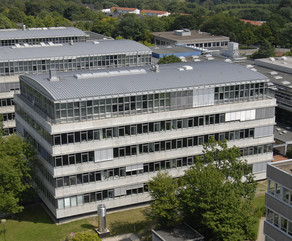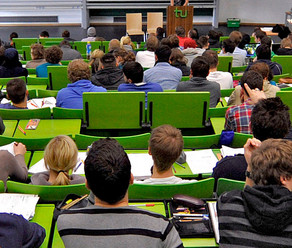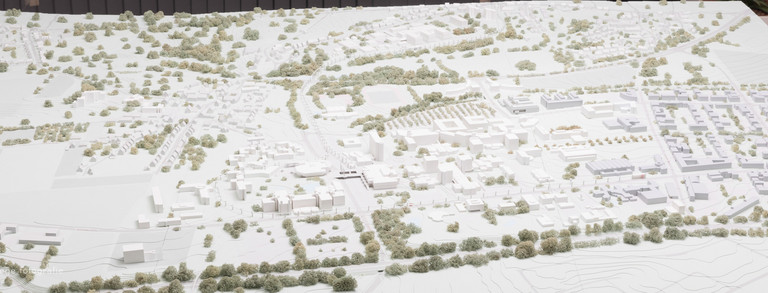24/25 F 05 - Studying different typologies of trees and arrangements as a cooling extension and microclimate control strat- egy in Dortmund
Description
Urbanisation has led to the proliferation of urban heat islands (UHIs), wherein cities experience significantly higher temperatures
than surrounding rural areas (Liu et al.,2022; Oke, 2002; Zhao et al., 2009). The intensification of UHIs, primarily driven by climate
change, presents severe challenges to urban residents, including increased energy consumption, air pollution, and health hazards
associated with heat (Li et al., 2014; Chung et al., 2009). In response, urban planners and policymakers are increasingly turning
to nature-based solutions (NBSs), such as urban trees, to mitigate the impacts of UHIs and enhance cooling effect, thereby signifi-
cantly improving urban livability in urban agglomeration.
Trees play a unique and invaluable role in urban environments, acting as natural (passive) air conditioners by providing shade, re-
ducing surface temperatures, and enhancing air quality through transpiration1. Understanding the cooling effects of trees within ur-
ban microclimates is not just academically significant but also has profound practical implications (Abdelmejeed & Gruehn, 2023,
2024; Bashirizadeh, 2021; Monsefi Parapari, 2015). This knowledge is crucial for formulating effective urban greening strategies
and establishing climate-resilient cities, thereby significantly improving the quality of life for urban residents. The findings of this re-
search could potentially inform urban planning and design decisions, leading to the development of more sustainable and resilient
cities.
Aims
This F-Project aims to make a significant and unique contribution to the field by investigating how different tree typologies (species)
and arrangements (solitary trees, tree rows, clusters) within different urban neighbourhoods/clusters of the city of Dortmund contri-
bute as a microclimate control and cooling extension strategy. The study will employ a combination of field data collection, including
temperature measurements and tree species identification, remote sensing using satellite imagery to assess the spatial distribution
of trees, and advanced data analysis techniques such as regression analysis to provide comprehensive insights into the role of ur-
ban trees in microclimate regulation. This is crucial because different tree typologies and arrangements behave in different ways in
urban microclimates (Rayan., et al., 2022; Rayan, 2024).
Objectives
• Identify and categorise tree-lined street typologies and arrangements in urban clusters.
• Use field data, remote sensing, and data analysis to evaluate the impact of trees on temperature regulation.
• Analyse the cooling effects of different tree species and arrangements on urban microclimates.
• Develop cooling extension models to predict the cooling effects of different tree typologies and configurations.
• Provide recommendations for urban greening strategies to mitigate the effects of UHI.
Study scope
The study will focus on the city's distinctive tree-lined streets, arranged in solitary, rows and cluster forms in Dortmund city. This ci-
ty, located in the North Rhine-Westphalia region of Germany, is well known for its unique urban landscape and its efforts in urban
greening, providing an ideal setting for studying the role of trees in urban cooling. The project group is required to determine the si-
ze of the case study and the sample frame and decide whether to sample 15 to 21 potential streets with different typologies of trees
and their arrangements in different neighbourhoods, offering a unique and comprehensive understanding of urban tree typologies
and their cooling effects.
Student learning objectives
Students will gain a deep understanding of the spatial distribution patterns of cooling effects provided by different typologies and ar-
rangements of trees in different urban neighbourhoods. They will also learn to identify the key characteristics of trees such as spe-
cies, size, and canopy density (Rahman et al., 2020; Zhang et al., 2022) that significantly influence the magnitude of cooling at the
micro-level, thereby supporting the creation of more habitable, sustainable, and climate-resilient urban environments.
In addition, students will demonstrate their advanced methodological skills in quantitative and spatial analysis, problem-oriented de-
sign solutions, and evidence-based planning decisions (related to urban trees), ensuring better, more comfortable, and sustainable
urban spaces for healthier urban living conditions for inhabitants.
Literatur
• Abdelmejeed, A.Y. & Gruehn, D. (2024): Optimizing an efficient urban tree strategy to improve microclimate conditions while con-
sidering water scarcity: a case study of Cairo. In: Discover Sustainability 5, 66. doi.org/10.1007/s43621-024-00247-w.
• Abdelmejeed, A.Y. & Gruehn, D. (2023): Optimization of Microclimate Conditions Considering the Urban Morphology and Urban
Trees Using Envi-met: A Case Study of Cairo City. In: Land 2023, 12 (12), 2145. doi.org/10.3390/land12122145.
• Chung, J.Y., Honda, Y., Hong, Y.C., Pan, X.C., Guo, Y.L. and Kim, H., 2009. Ambient temperature and mortality: an international
study in four capital cities of East Asia. Science of the total environment, 408(2), pp.390-396.
• Danial Monsefi Parapari (2015): Adaptation to Climate Change and Thermal Comfort. Dissertation zur Erlangung des akademi-
schen Grades Doktor-Ingenieur (Dr.-Ing.) an der Fakultät Raumplanung der TU Dortmund.
• Li, D., Bou-Zeid, E. and Oppenheimer, M., 2014. The effectiveness of cool and green roofs as urban heat island mitigation strate-
gies. Environmental Research Letters, 9(5), p.055002
• Liu, Z., Zhan, W., Bechtel, B., Voogt, J., Lai, J., Chakraborty, T., Wang, Z.H., Li, M., Huang, F. and Lee, X., 2022. Surface war-
ming in global cities is substantially more rapid than in rural background areas. Communications Earth & Environment, 3(1),
p.219.
• Mohammad Bashirizadeh (2021): The Impact of Persian Garden Principles as Traditional Ecological Landscaping on Thermal
Comfort. Green Strategies for Climatic Urban Landscape Design in Iran, Based on Persian Garden Analysis. Dissertation zur Er-
langung des akademischen Grades Doktor-Ingenieur (Dr.-Ing.) an der Fakultät Raumplanung der TU Dortmund.
• Nowak, D.J., Hirabayashi, S., Bodine, A. and Greenfield, E., 2014. Tree and forest effects on ai-r quality and human health in the
United States. Environmental pollution, 193, pp.119-129
• Oke, T.R., 2002. Boundary layer climates. Routledge.
• Rahman, M.A., Stratopoulos, L.M., Moser-Reischl, A., Zölch, T., Häberle, K.H., Rötzer, T., Pretzsch, H. and Pauleit, S., 2020.
Traits of trees for cooling urban heat islands: A meta-analysis. Building and Environment, 170, p.106606.
• Rayan, M., 2024. Green Infrastructure Planning Framework: An Exploratory Study Towards Resilient Cities In Khyber Pakhtunk-
hwa Province, Pakistan. Dissertation, Department of Spatial Planning, TU Dortmund University, 196 pp. plus appendix. http://
dx.doi.org/10.17877/DE290R-24285.
• Rayan, M., Gruehn, D. and Khayyam, U., 2022. Planning for Sustainable Green Urbanism: An Empirical Bottom-Up (Communi-
ty-Led) Perspective on Green Infrastructure (GI) Indicators in Khyber Pakhtunkhwa (KP), Pakistan . International Journal of Envi-
ronmental Research and Public Health 19, no. 19: 11844. doi.org/10.3390/ijerph191911844 .
• Zhang, J. and Yao, F., 2009, May. The characteristics of urban heat island variation in Beijing urban area and its impact factors.
In 2009 Joint Urban Remote Sensing Event (pp. 1-6). IEEE.
• Zhang J, Khoshbakht M, Liu J, Gou Z, Xiong J, Jiang M. A clustering review of vegetation-indicating parameters in urban thermal
environment studies towards various factors. J Therm Biol. 2022; 110:103340.Seite 3 von 3Erstellt von: Janine Denise Bayer
Voraussetzung
B.Sc. RP (2019): Successful completion of Module 2 for participation in the F-Project. (Deadline: Registration on the F-Project-Mar-
ket)
Nachweis
Marks will be awarded based on contributions to group work and the quality of the final report and disputation.
Verantwortliche Person: Dr. Muhammad Rayan








